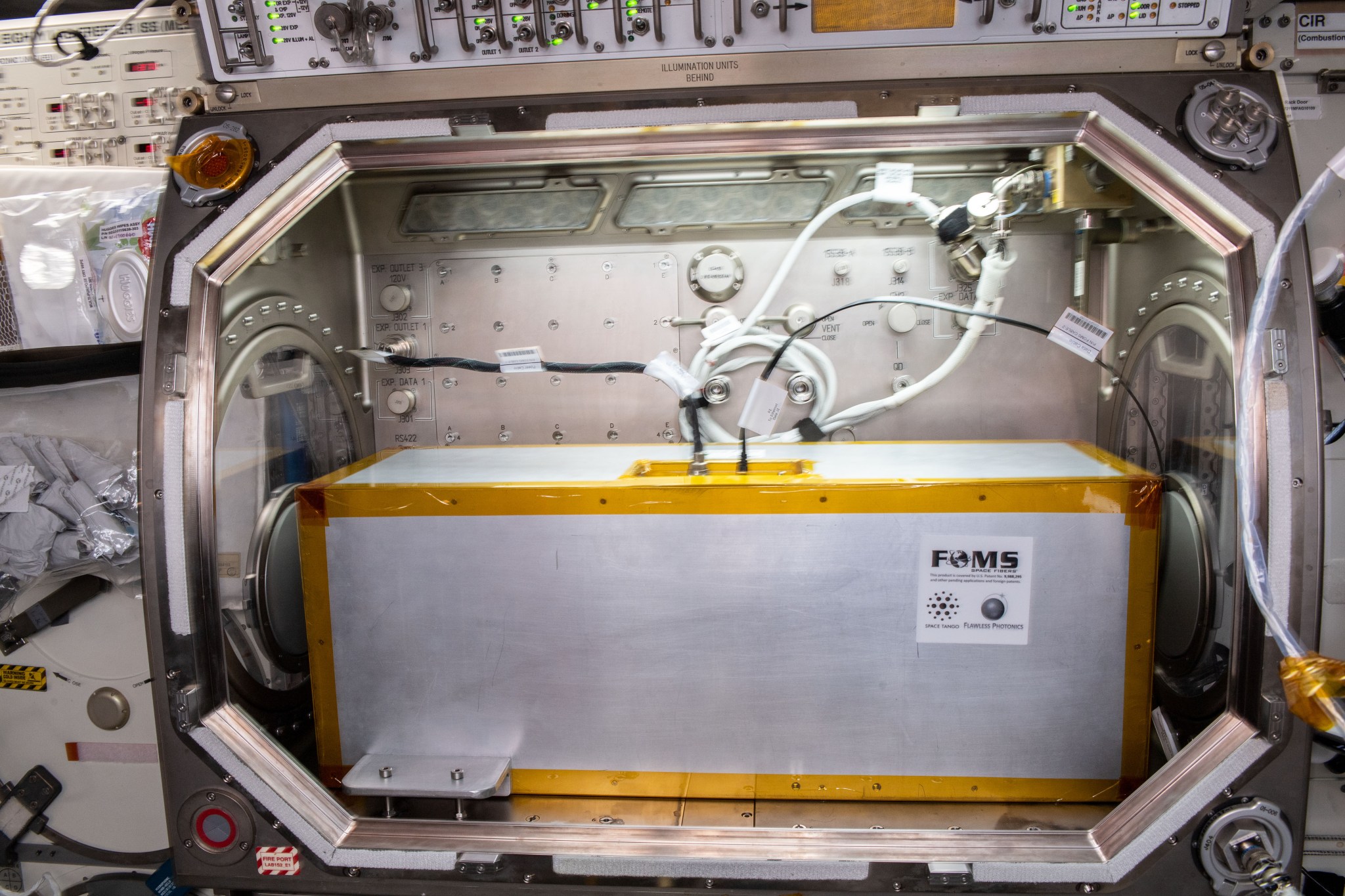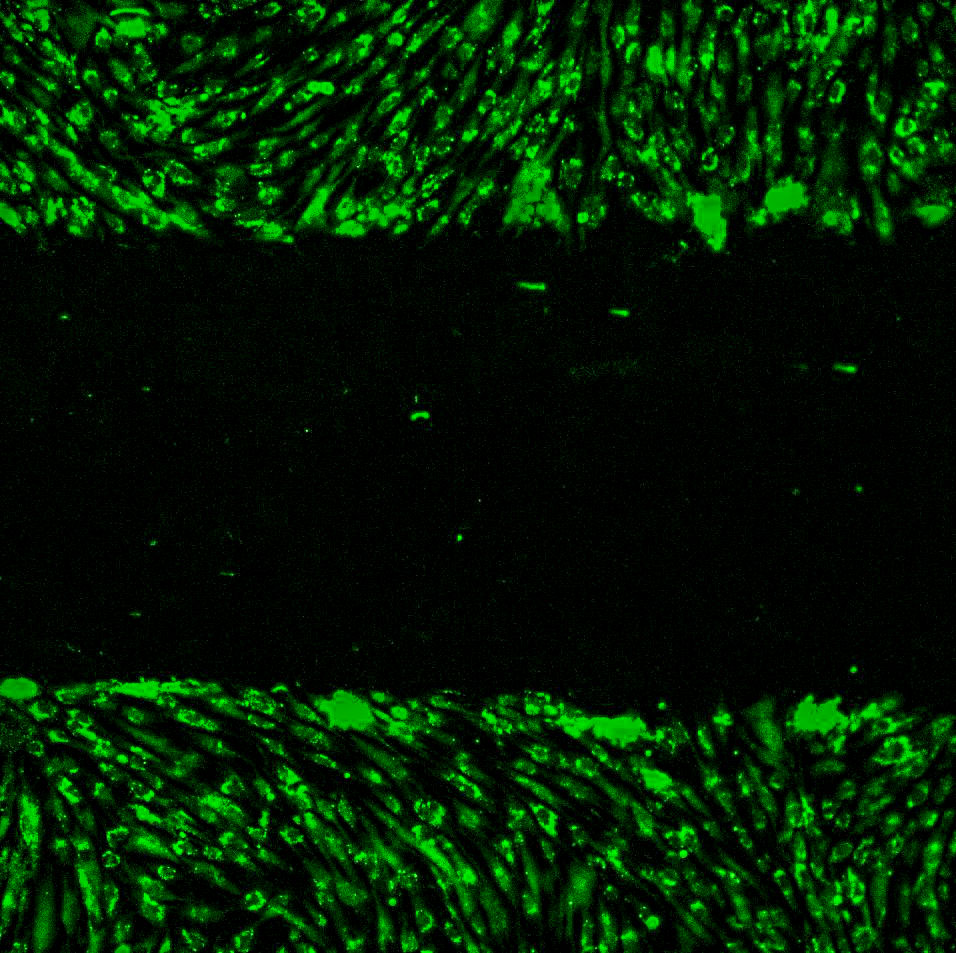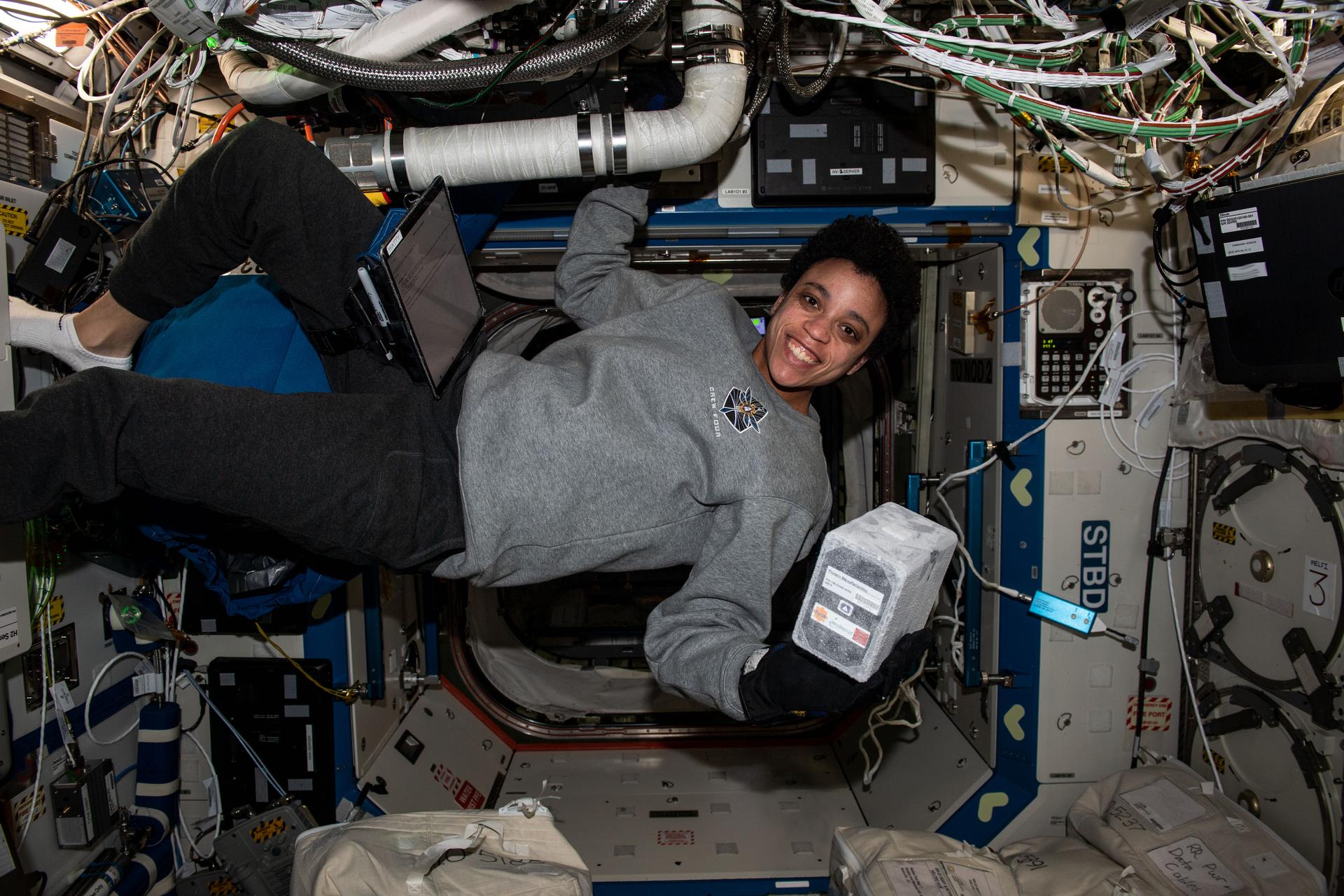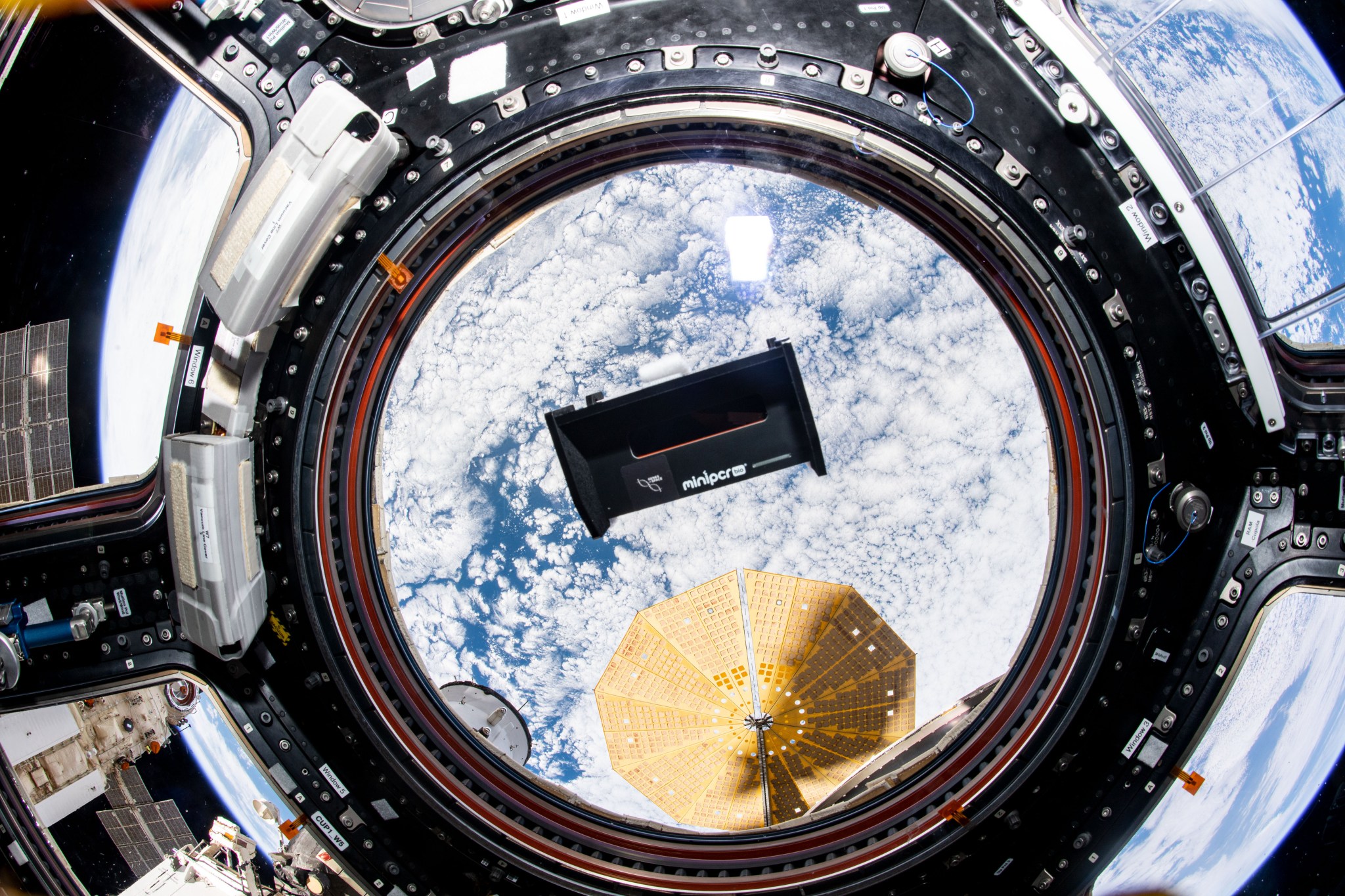Crew members aboard the International Space Station conducted scientific investigations during the week of July 25 that included evaluating production of fiber optic cable in space, demonstrating conversion of inedible plant material into edible protein, and testing a protein synthesis technology that does not involve living cells for use in microgravity.
Here are details on some of the microgravity investigations currently taking place aboard the orbiting lab:
A transparent advantage
Space Fibers–3, sponsored by the ISS National Lab, continues work evaluating methods for producing fiber optic cable in space. The experiments use a blend called ZBLAN, which produces glass a hundred times more transparent than silica-based glass, making it exceptional for fiber optics. Previous studies showed improved properties in fiber drawn in microgravity compared to that fabricated on the ground. Manufacturing specialty fibers in space provides a high return relative to the cost of sending materials to and returning product from orbit and increases commercial use of the space station. Producing a higher-performance product that offers lower transmission losses could improve potential applications on Earth, including imaging, remote sensing, and next-generation optical communications. During the week, crew members set up hardware for the investigation.

From waste to taste
Protein Manufacturing demonstrates technology for converting inedible plant materials and other waste into high-protein, edible fungal biomats in microgravity. The biomats incubate in the station’s temperature-controlled Space Automated Bioproduct Laboratory (SABL). A system for producing fresh food in space is a major goal for future missions, as it would reduce the amount of prepackaged food that must be taken along, lowering launch mass and storage needs. This technology is relatively simple, requires energy only for temperature control, and needs little water. The resulting biomats are fast-growing, nutritious, and easy to harvest. This method has potential applications on Earth as well, as it uses a fraction of the land, water, and energy required by traditional agriculture. In fact, through a company called Nature’s Fynd, this research already has led to delivery of nutritious food to people on Earth. Crew members installed the Plate Habitat (PHAB) containing the fungal bioreactors during the week.
Producing and detecting proteins
Genes in Space-9 evaluates a protein synthesis technology, called BioBits®, that does not involve living cells, for use in microgravity. BioBits® are freeze-dried so they remain stable in space and are simply rehydrated when needed. This investigation also evaluates two biosensors that target a specific ribonucleic acid (RNA) sequence and chemical molecule, producing a fluorescent signal when the targets are detected. Results could support development of tools for medical diagnostics, on-demand production of medicine and vaccines, and environmental monitoring on future space missions. Findings also may support development of inexpensive and widely accessible diagnostic devices and medical therapies for use in remote or extreme environments on Earth and could be used as tools for hands-on learning in the classroom. Genes in Space, sponsored by the ISS National Lab, is one of a variety of programs that offer students the opportunity to send research and technology to the space station. Crew members conducted runs of the Genes in Space-9 experiment during the week.
Other investigations involving the crew:
- PGTIDE studies the effectiveness of stain removal ingredients and whether these detergent formulations undergo changes in physical appearance, stability, or performance in microgravity. Results could support development of systems for laundering crew clothing on future missions to the Moon and Mars.
- Immunosenescence uses tissue chips to study how microgravity affects immune function during flight and whether immune cells recover post-flight. Results could support development of treatments to protect astronauts during future long-duration spaceflight and lead to development of more effective treatments for immune system aging on Earth.
- Fiber Optic Production-2 builds on previous work to develop the technology for manufacturing commercial optical fibers in microgravity. These fibers are difficult to manufacture on Earth due to gravity-induced crystallization and other factors, and this investigation could help guide manufacture of optical fiber aboard the space station for commercial use.
- Butterfly IQ Ultrasound demonstrates a portable ultrasound device for use in space. This technology could provide critical medical capabilities to crews on long duration missions where immediate ground support is not an option. The device also has potential applications for medical care in remote and isolated settings on Earth.
- NutrISS, an investigation from ESA (European Space Agency), assesses body composition and energy balance using wearable sensors. Results could lead to improved physical health and quality of life for astronauts and better clinical management of malnourished, obese, or immobilized patients on Earth.
- MISSE-16 tests a fabric with embedded sensors, 3D printed polymers, dried microbes, paraffin wax thermal protection, thin solar cells, and other materials in the harsh environment of space. The samples could help improve equipment and systems for future space exploration.

The space station, a robust microgravity laboratory with a multitude of specialized research facilities and tools, has supported many scientific breakthroughs from investigations spanning a wide variety of scientific disciplines. The ISS Benefits for Humanity 2022 publication details the expanding universe of results realized from more than 20 years of experiments conducted on the station. Access the publication and related materials online.
For daily updates, follow @ISS_Research, Space Station Research and Technology News, or our Facebook. Follow ISS National Lab for information on its sponsored investigations. For opportunities to see the space station pass over your town, check out Spot the Station.
John Love, ISS Research Planning Integration Scientist
Expedition 67































